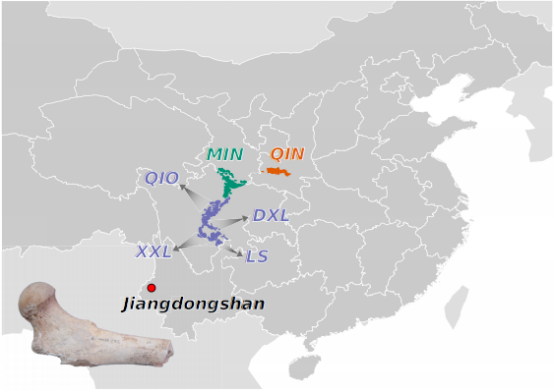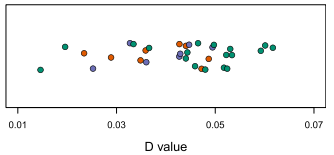On May 9, “Paleogenome Reveals Genetic Contribution of Extinct giant Panda to Extant Populations” was published in the prestigious international journal Current Biology (IF=9.251). It is a collaborative achievement of Prof. LAI Xulong’s team from the State Key Laboratory of Biogeology and Environmental Geology, CUG, and researchers from the University of Potsdam, Yunnan Institute of Cultural Relics and Archaeology, etc.
Historically, the giant panda was widely distributed from northern China to southwestern Asia. As a result of range contraction and fragmentation, extant individuals are currently restricted to fragmented mountain ranges on the eastern margin of the Qinghai-Tibet plateau, where they are distributed among three major population clusters. However, little is known about the genetic consequences of this dramatic range contraction. For example, were regions where giant pandas previously existed occupied by ancestors of present-day populations, or were these regions occupied by genetically distinct populations that are now extinct? If so, is there any contribution of these extinct populations to the genomes of giant pandas living today? To investigate these questions, we sequenced the nuclear genome of an∼5,000-year-old giant panda from Jiangdongshan, Tengchong County in Yunnan Province, China. We find that this individual represents a genetically distinct population that diverged prior to the diversification of modern giant panda populations. We find evidence of differential admixture with this ancient population among modern individuals originating from different populations as well as within the same population. We also find evidence for directional gene flow, which transferred alleles from the ancient population into the modern giant panda lineages. A variable proportion of the genomes of extant individuals is therefore likely derived from the ancient population represented by our sequenced individual. Although extant giant panda populations retain reasonable genetic diversity, our results suggest that this represents only part of the genetic diversity this species harbored prior to its recent range contractions.

Figure 1. Sampling Locations of Giant Pandas Investigated in This Study

Figure 2. Relationship of the Ancient Giant Panda to Modern Giant Panda Genomes

Figure 3. D Statistic Tests of Differential Admixture with the Ancient Giant Panda, Relative to the Least Admixed Modern Giant Panda
Full Text: https://doi.org/10.1016/j.cub.2019.04.021